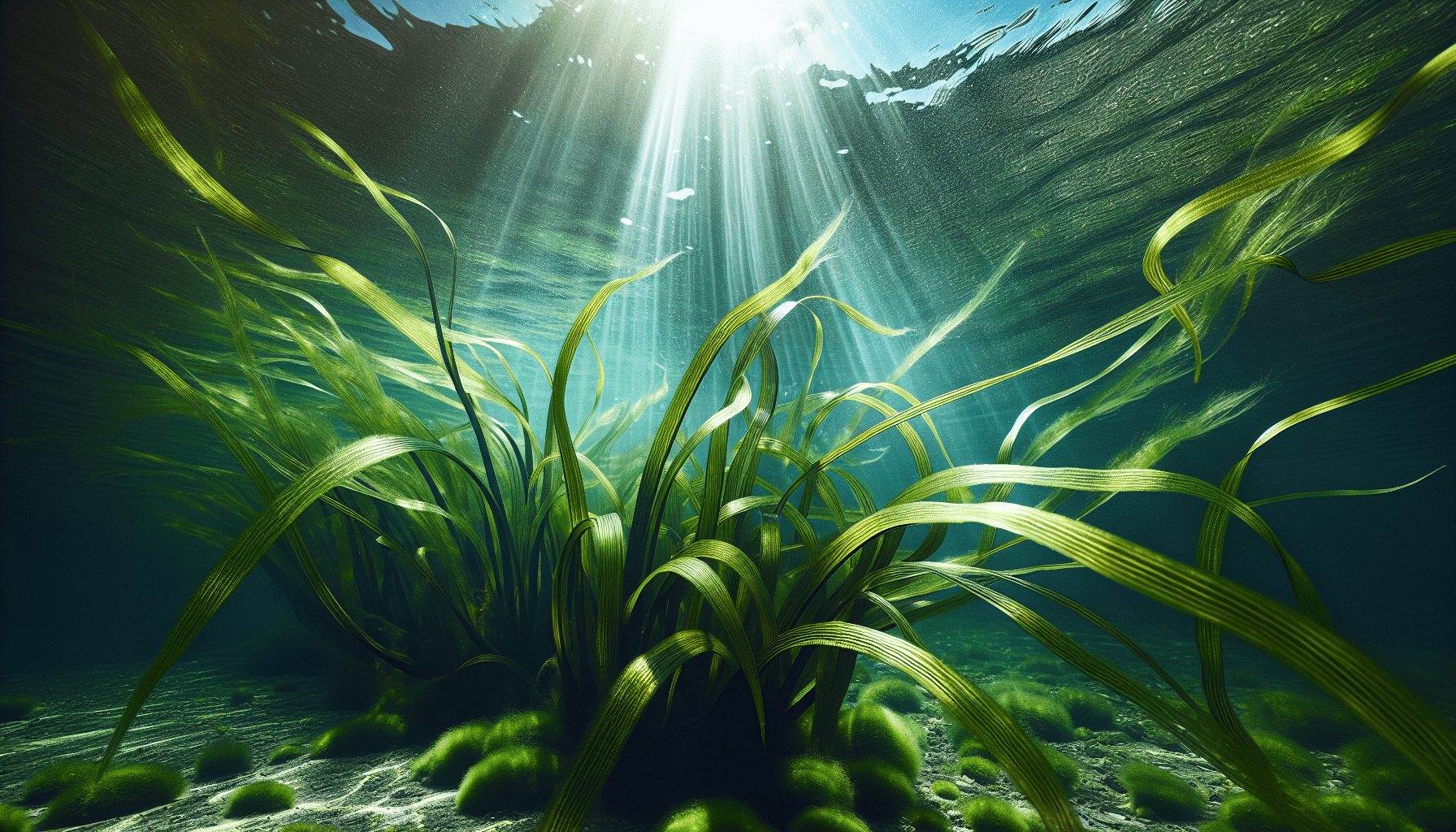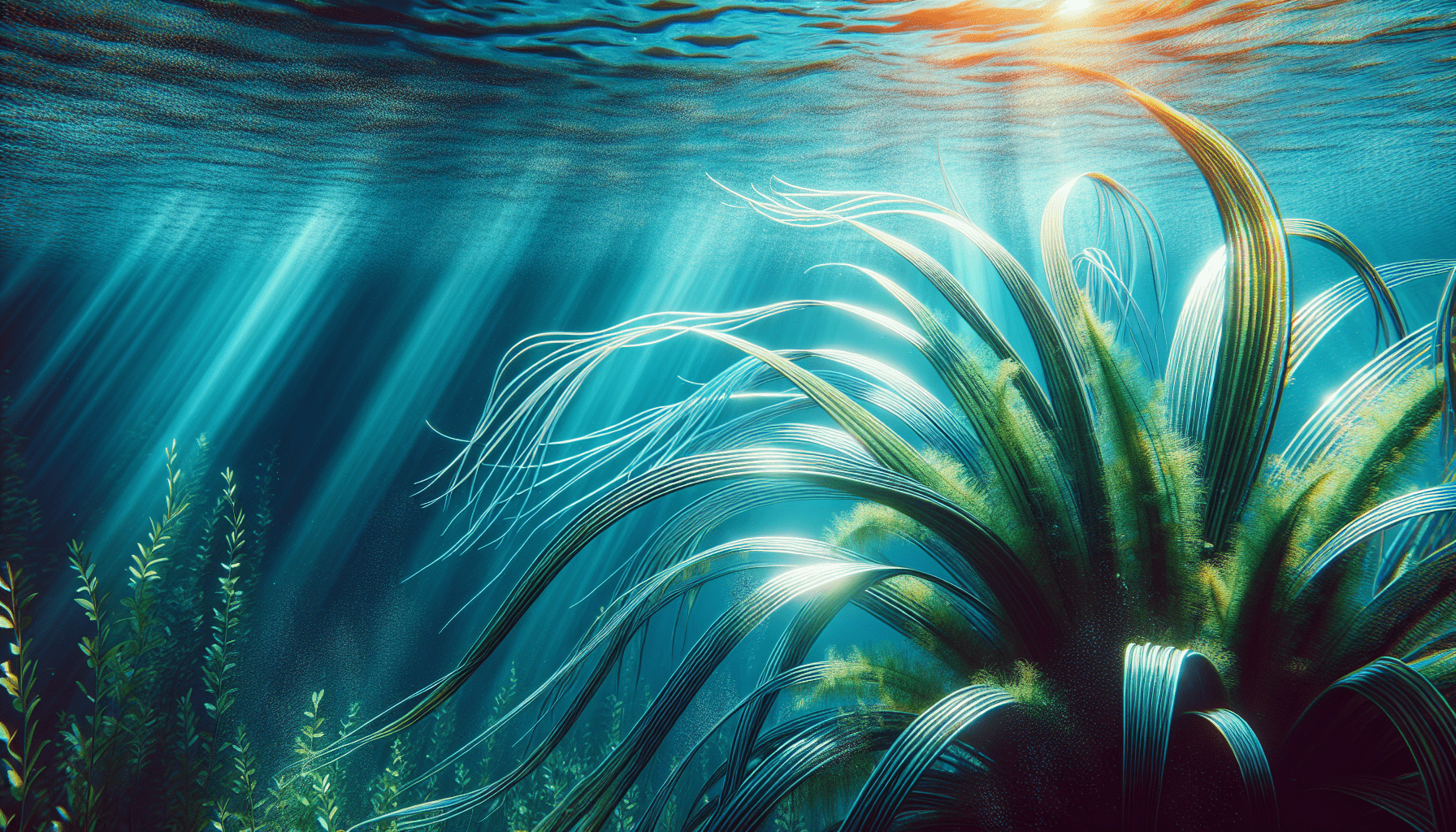In the article “What Is The Aquatic Weed Vallisneria,” you navigate the ecology of aquatic landscapes, particularly focusing on the plant known by many as Vallisneria or water celery. This narrative expounds on the features, habitat, and the broader ecological role of Vallisneria, providing detailed insights into why this supposed weed is in fact, an essential aspect of aquatic systems. As you progress through the piece, you will also gain a deepened understanding of its economic and environmental significance ranging from fisheries to water management. At the heart of this exploration stands the Vallisneria, a seemingly mundane plant with a potentially profound impact on its aquatic environment.

The Basic Description of Vallisneria
Vallisneria, also known as eelgrass, tape grass, or simply vallis, is a genus of freshwater aquatic plant that belongs to the Hydrocharitaceae family. Noted for its long, ribbon-like leaves, it has earned recognition for its remarkable resilience and adaptability. This aesthetic and hardy genus boasts a vast array of characteristics which act in cohesion to equip it to thrive in varying aquatic conditions. A foundation species in many freshwater ecosystems, Vallisneria serves as a significant contributor to the biodiversity and functionality of aquatic habitats.
General characteristics of Vallisneria
Vallisneria typically showcases leaves that are long, linear, and have rounded tips. The leaves vary in color from bright green to reddish-brown, and can reach up to 1 to 2 meters in length depending on the species. Unlike many other aquatic plants, Vallisneria exhibits a highly advanced root system, which anchors it to the substrate and enables nutrient absorption. Male flowers are borne on the water’s surface, while female flowers are submerged, thus facilitating hydrophilous pollination.
Its origin and distribution globally
Native to the tropics and subtropics, Vallisneria has managed to colonize diverse habitats globally. This range extends from Asia, Europe, to North America, indicating the plant’s impressive geographical spread. The adaptability of Vallisneria to a wide range of environmental conditions, together with human interference, has played a significant role in its widespread distribution.
Different Species of Vallisneria
Vallisneria americana
The Vallisneria americana, commonly known as wild celery or American eelgrass, is widespread across the North American region. Known for its extensive and robust root system, it has the ability to grow in varying water depths. The ability of V. americana to reproduce efficiently plays a significant role in its survival and distribution.
Vallisneria spiralis
Vallisneria spiralis, or tape grass, is native to Europe. Known for its slender and spiral leaves, hence its name, it is often used in aquarium settings due to its aesthetic appeal and adaptability. This non-demanding plant grows rapidly under optimal conditions, often forming dense stands in the water column.
Vallisneria gigantea
This is a relatively large Vallisneria species native to Asia. Vallisneria gigantea, or giant vallis, is characterized by broad leaves that can reach up to two meters or more. This plant requires a relatively large space to grow and is an ideal choice for large aquariums or aquatic gardens.
Other common species
Other Vallisneria species include Vallisneria natans and Vallisneria caulescens. These are also commonly used in the aquarium trade due to their unique characteristics and adaptability to different water conditions.
Vallisneria in Aquatic Ecosystems
Role of Vallisneria in the ecosystem
As a foundational species, Vallisneria plays many pivotal roles in the aquatic ecosystem. It acts as a primary producer, converting sunlight into biomass through photosynthesis, and provides shelter for many aquatic animals, reducing predation and fostering biodiversity. Vallisneria also contributes significantly to nutrient cycling and water oxygenation, thereby promoting a healthy ecosystem.
The preferred habitats of Vallisneria
As an astoundingly adaptable plant, Vallisneria thrives in a plethora of habitats ranging from slow-moving waters to relatively stagnant water bodies. It prefers a sandy or muddy substrate, adequate sunlight, and water rich in dissolved minerals. Moreover, some species can tolerate both soft and hard water conditions.
Overall impact on water bodies
Vallisneria significantly alters the physical and chemical properties of the water bodies it inhabits. Its dense stands reduce water flow velocity and encourage sedimentation. Moreover, it affects water chemistry by absorbing excess nutrients and releasing oxygen into the water column, thereby improving water quality.

Reproduction and Life Cycle of Vallisneria
How Vallisneria reproduces
Vallisneria exhibits both sexual and asexual reproduction. It produces flowers for sexual reproduction, with female flowers reaching the water surface via a long stalk to be fertilized by male flowers. Additionally, the plant also reproduces vegetatively via runners, which produce daughter plants at regular intervals.
The stages in its life cycle
The life cycle of Vallisneria encompasses seed germination, vegetative growth, maturity, flowering, and seed production. Under optimal conditions, this cycle can occur rapidly, enabling the plant to colonize new habitats efficiently.
How Vallisneria Spreads
Methods of propagation of Vallisneria
Propagation of Vallisneria occurs naturally either through seed dispersal or vegetative reproduction. In the aquarium trade, Vallisneria can also be propagated by cutting and planting the runners.
Factors influencing its spread
Factors such as nutrient availability, temperature, light intensity, substrate type and disturbance influence the spread of Vallisneria. Human activities including water traffic and the aquarium trade have also significantly contributed to new introductions of Vallisneria to novel environments.
Effects of Vallisneria on Other Aquatic Life
How Vallisneria affects fish and other aquatic animals
Vallisneria serves as a source of food for various aquatic animals. It also provides shelter and favorable breeding conditions for certain fish and invertebrates. However, the plant’s dense thickets can hinder the movement of larger aquatic animals, and excessive growth can lead to oxygen depletion and cause fish kills in extreme cases.
Its impact on other aquatic plants
Coexistence among Vallisneria and other aquatic plants depends on multiple factors, including competition for light and nutrients. Dense Vallisneria stands may overshadow other plant species, inhibiting their growth. In contrast, the presence of Vallisneria can enhance nutrient availability in the water column, potentially benefiting other plant species.
Uses of Vallisneria
Utilization in aquariums and aquascapes
Due to its versatility and aesthetics, Vallisneria is a popular choice for aquariums and aquascapes. Its characteristics, such as rapid growth, low maintenance, and adaptability, make it a preferred choice for both professionals and beginners.
Its role in environmental conservation
Vallisneria plays a crucial role in stabilizing sediments, reducing turbidity, and improving water quality, which directly aids in environmental conservation. Additionally, it provides an ideal habitat for various aquatic species, fostering biodiversity.
Other practical uses of Vallisneria
Vallisneria leaves were historically used by Native Americans for weaving mats and baskets. Certain animal species also feed on Vallisneria, making it a valuable resource in maintaining the balance within aquatic ecosystems.
Potential Threats of Vallisneria
Negative impacts on aquatic habitats
Despite its benefits, excessive growth of Vallisneria can lead to ecological imbalance. Dense monocultures of Vallisneria can disrupt water flow and lead to oxygen depletion at night, potentially causing fish kills.
Its status as an invasive species in certain areas
Vallisneria has been listed as an invasive species in some regions due to its aggressive growth and colonization. Once established, it can displace native species and alter the local ecosystem dynamics.
How to Control Vallisneria Growth
Chemical control methods
Herbicides are sometimes used to control excessive growth of Vallisneria. However, the use of chemical controls demands a cautious approach due to potential impacts on non-target species and the environment.
Biological control methods
Certain animal species like grass carp are known to feed on Vallisneria and can be used as a biological control method. However, the introduction of these species needs to be carefully managed to prevent additional ecological disruptions.
Manual and mechanical control methods
Manual removal of plants or mechanical harvesting can be effective in controlling Vallisneria in some contexts. However, these methods can be labor-intensive and may need to be repeated regularly to maintain control.
Research and Studies on Vallisneria
Recent advancements in Vallisneria research
Recent research on Vallisneria includes studies on its growth, reproduction, ecological role, and response to different environmental conditions. These aim to provide deeper insights into this genus and open avenues for its effective management and sustainable use.
Interesting findings from scientific studies
Some studies have reported unique findings like the ability of Vallisneria to cycle nutrients from sediment to the water column, which could significantly influence the nutrient dynamics in an aquatic ecosystem. Other studies have reported its utility in biofiltration and bioremediation due to its nutrient uptake abilities.
In conclusion, Vallisneria is a resilient and versatile aquatic plant with various ecological roles. While it has beneficial effects within aquatic ecosystems and carries aesthetic and practical appeal, it is also associated with some ecological risks if not managed properly. Further research and informed management practices can help ensure its sustainable use and conservation.